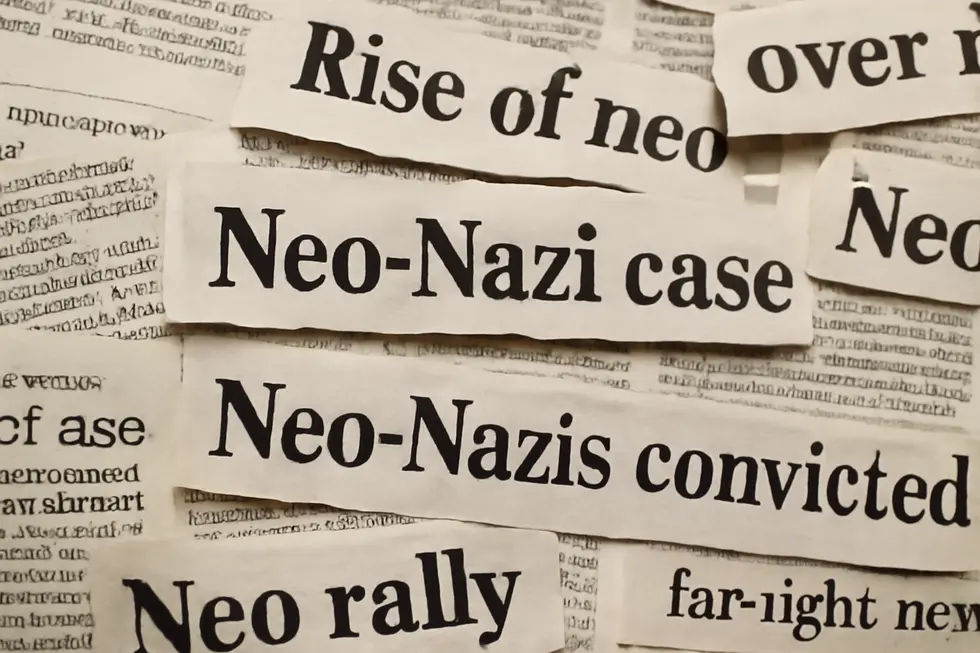Introduction
The trademark landscape around the term “Neo” presents a unique case for business owners who prioritize intellectual property protection. Despite “Neo” being a recognizable brand element across several sectors, there is a surprising absence of trademark-specific lawsuits directly involving this name. Instead, legal challenges linked to “Neo” predominantly arise in patent disputes and consumer complaints unrelated to trademark rights. Understanding this nuanced environment is critical for business owners who want to protect their brands effectively. This analysis unfolds in six chapters, starting with an overview of the absence of trademark lawsuits related to “Neo,” followed by detailed insights into Neo Wireless’s patent litigation, consumer complaints against Neo Insurance Solutions, unrelated legal contexts involving the term “Neo,” potential research avenues for trademark disputes, and finally, the strategic implications of this unique IP landscape for business owners.
Tables of Contents
Chapter 1: Legal Framework Explaining the Lack of Neo Trademark Lawsuits
- Navigating Trademark Protection and Passing Off in Neo Trademark Absence of Litigation
- The Critical Role of Registration in Trademark Enforcement Amid Neo-Labeled Disputes
- Navigating Patent Battlegrounds: Neo Wireless’s Focus Amid Trademark Litigation Absence
- Crucial Judicial Factors Influencing Trademark Dispute Resolutions in Neo Cases
- Navigating Intellectual Property Procedures: Administrative Reviews and Trademark Enforcement Without Litigation
Chapter 2: Neo Wireless Patent Litigation as Related Intellectual Property Dispute
- Navigating Technological Innovations and Legal Challenges in Wireless Patent Disputes
- Economic Impact of Neo Wireless Patent Enforcement on Automotive Innovation and Costs
- Procedural Dynamics and Legal Foundations in Neo Wireless Patent Disputes
- Geopolitical Stakes and Industry Dynamics Shaping Neo Wireless Patent Litigation
- Shaping Innovation and Industry Dynamics: The Broader Impacts of Neo Wireless Patent Litigation
Chapter 3: Consumer Complaints Against Neo Insurance Solutions and Trademark Irrelevance
- Examining Fraud Allegations and Policy Cancellations Amidst Trademark Nonissues
- Communication Breakdowns and Their Critical Role in Shaping Consumer Trust Beyond Trademark Concerns
- Customer Disputes and Corporate Responses Amid Trademark Absence in Neo Insurance Solutions
- Economic Impact of Unresolved Claims Amid Trademark Nonissues in Neo Insurance Solutions
- Why Trademark Status Does Not Address Consumer Complaints Against Neo Insurance Solutions
Chapter 4: Analysis of Unrelated Legal Cases Referencing ‘Neo’ in Non-Trademark Contexts
- Decoding the Neo Wireless Patent Conflict: Unraveling Non-Trademark Legal Challenges
- Indemnification Responsibilities in Neo4j Licensing: Navigating Liability Without Trademark Conflict
- The Role of Technical Claim Construction in Distinguishing Patent Issues from ‘Neo’ Trademark Conflicts
- Navigating Intellectual Property Risks Amidst Non-Trademark ‘Neo’ References
- Navigating Legal Boundaries: Distinguishing ‘Neo’ Related Cases Beyond Trademark Infringement
Chapter 5: Exploring Key Legal Dimensions in Lawsuit Neo Trademark Disputes
- Navigating Patent Claim Construction: Insights for Neo Trademark Dispute Research
- Analyzing Consumer Confusion and Trademark Strength in Neo Dispute Research
- Integrating Litigation Strategies and Intellectual Property Prosecution in Neo Trademark Research
- Harnessing Legal Technology and Data Analytics to Illuminate Neo Trademark Litigation Challenges
- Navigating Contractual Indemnification to Mitigate Intellectual Property Risks in Neo Trademark Research
Chapter 6: Implications of the Lack of Lawsuit Neo Trademark Cases on Intellectual Property Strategy
- Balancing Lower Litigation Risks with Enforcement Challenges in Neo Trademark Strategy
- Leveraging Patent Strength and Alternative IP Tactics Amid the Absence of Neo Trademark Litigation
- Harnessing Proactive Surveillance and Alternative Enforcement to Navigate Trademark Protection Gaps
- How Absence of Neo Trademark Litigation Shapes Licensing and Negotiation Strategies
- Navigating Legal Ambiguity: Risk Management in Neo Trademark’s Uncharted Litigation Landscape
Chapter 1: Legal Framework Explaining the Lack of Neo Trademark Lawsuits

1. Navigating Trademark Protection and Passing Off in Neo Trademark Absence of Litigation
The absence of lawsuits involving the Neo trademark can be understood through key legal concepts like passing off and statutory trademark protection. Passing off protects unregistered marks by requiring proof of goodwill, misrepresentation, and resulting damage, setting a high threshold for claims. Registered trademark rights, governed by laws such as the Lanham Act, grant exclusive use and guard against confusingly similar marks. When no infringement or confusion occurs, litigation is unlikely. Moreover, strong enforcement, alternative dispute resolution, and competition law balance often prevent trademark disputes from escalating to lawsuits. These factors collectively explain why Neo trademark cases show no trademark litigation. For deeper insights into trademark protection, see trademark protection for business name and logo.
2. The Critical Role of Registration in Trademark Enforcement Amid Neo-Labeled Disputes
Registered trademarks grant owners explicit rights recognized by law, enabling decisive legal actions against unauthorized use. This formal registration simplifies enforcement by providing prima facie evidence of ownership and validity of the mark. Conversely, unregistered trademarks rely on common law protections like passing off, requiring proof of goodwill, consumer confusion, and damage—an often complex and uncertain process. The lack of trademark lawsuits involving “Neo” underscores how unregistered marks may face practical barriers to litigation, as securing legal recourse without registration demands more evidence and incurs higher costs. This distinction emphasizes why registration is pivotal in protecting brand identity and pursuing infringement claims effectively. For deeper insight on trademark protections, refer to common law trademark rights.
3. Navigating Patent Battlegrounds: Neo Wireless’s Focus Amid Trademark Litigation Absence
Neo Wireless’s legal landscape starkly contrasts its trademark domain. While its trademarks remain untouched by litigation, its patents face rigorous challenges, especially at the Patent Trial and Appeal Board. These disputes often hinge on precise claim interpretations, underpinning critical wireless technologies used in automotive and mobile sectors. The consistent upholding of Neo Wireless patents affirms strong patent protection and enforcement strategies. This divergence highlights how businesses may prioritize patent rights enforcement over trademarks, underscoring distinct approaches within intellectual property law. Understanding such IP dynamics is essential for grasping trademark protection business name logo nuances.
4. Crucial Judicial Factors Influencing Trademark Dispute Resolutions in Neo Cases
Judicial factors critically shape the outcome of trademark disputes, including those involving the Neo mark. Courts demand strong evidence demonstrating consumer confusion and market impact, while also interpreting the scope and distinctiveness of the trademark. Judicial independence ensures enforcement integrity, preventing outside influence on case outcomes. Consumer sophistication further affects whether confusion is established. Moreover, legal precedents guide judicial reasoning, and constitutional protections—like the First Amendment—limit enforcement reach. These intertwined considerations often deter litigation, explaining the notable absence of Neo trademark lawsuits. For deeper guidance on trademark protection strategies, see trademark protection for business names and logos.
5. Navigating Intellectual Property Procedures: Administrative Reviews and Trademark Enforcement Without Litigation
The absence of lawsuits concerning the “Neo” trademark reflects a preference for administrative enforcement over litigation, mirroring procedural practices rooted in patent law’s Inter Partes Review (IPR). While IPR targets patent validity through early, cost-effective challenges, its principles influence trademark enforcement at the Trademark Trial and Appeal Board (TTAB), where oppositions and cancellations resolve conflicts without courts. This administrative framework balances timely dispute resolution with the protection of vested rights, fostering efficiency and cost control. Such procedural mechanisms underscore the adaptive nature of IP enforcement, enabling trademark holders to assert rights effectively in the absence of formal lawsuits, as seen in the “Neo” trademark context. For deeper insights on trademark enforcement strategies, see trademark protection guidance at Trademark2Go.
Chapter 2: Neo Wireless Patent Litigation as Related Intellectual Property Dispute

1. Navigating Technological Innovations and Legal Challenges in Wireless Patent Disputes
Wireless technology patent litigation hinges on protecting complex innovations like antenna designs and signal processing methods. Companies build extensive patent portfolios to safeguard these critical contributions, ensuring competitive advantage and fair compensation. When unauthorized use of patented wireless technology occurs, disputes arise over infringement and patent validity. The evolving technical landscape demands robust intellectual property strategies to balance fostering innovation with legal protection. Understanding this interplay is key to comprehending Neo Wireless’s legal defense amid patent challenges in the automotive sector. Detailed insights into intellectual property approaches can be found through sources outlining corporate IP strategies.
2. Economic Impact of Neo Wireless Patent Enforcement on Automotive Innovation and Costs
The enforcement of Neo Wireless’s patent has led automakers like Ford, GM, and Nissan to face increased legal fees and licensing expenses. This ongoing patent litigation exerts pressure on vehicle manufacturers to innovate around protected wireless technologies, often delaying product timelines and reshaping R&D priorities. With Neo Wireless’s patent protections upheld by the PTAB, automakers must strategize to mitigate infringement risks while balancing innovation needs. Consequently, this legal environment influences how the automotive sector manages intellectual property and adapts economically to evolving technology demands. For further insight into intellectual property management, see trademark protection for business names and logos.
3. Procedural Dynamics and Legal Foundations in Neo Wireless Patent Disputes
Neo Wireless patent litigation unfolds within a robust legal framework emphasizing patent validity and infringement defenses. Central to this process are Patent Trial and Appeal Board (PTAB) reviews, where attempts to challenge patents via inter partes review (IPR) have been consistently unsuccessful, affirming patent strength. Multidistrict litigation (MDL) consolidates cases for procedural efficiency, while courts meticulously oversee evidentiary standards and jury instructions, especially concerning licensing under FRAND (Fair, Reasonable, and Non-Discriminatory) terms. Judicial scrutiny may overturn verdicts if expert testimony falls short, underscoring the procedural rigor shaping these complex wireless technology disputes, as seen in high-profile SEP litigation contexts similar to Neo Wireless’s own.
4. Geopolitical Stakes and Industry Dynamics Shaping Neo Wireless Patent Litigation
The Neo Wireless patent dispute transcends typical IP battles, intertwining industry competition with geopolitical concerns. Major automotive manufacturers like Ford, GM, and Nissan contest patent validity, wary of licensing costs and design restrictions. The Patent Trial and Appeal Board’s rulings in Neo’s favor reinforce the patent’s scope, compelling automakers to adapt strategies amid ongoing appeals. Beyond industry, these wireless technology patents influence national leadership in technology standards and supply chains critical to connected vehicles. This intersection highlights how such litigation affects not only business but also broader economic security and technological sovereignty. For a deeper understanding of intellectual property protection strategies, see this resource on company intellectual property protection.
5. Shaping Innovation and Industry Dynamics: The Broader Impacts of Neo Wireless Patent Litigation
The Neo Wireless patent litigation significantly influences innovation and industry competition by asserting protection over key wireless communication technologies vital to automotive connectivity. Its upheld patent promotes continuous research in efficient network technologies while setting legal and economic precedents that affect how companies approach intellectual property risks and licensing. This dynamic fosters technological progress but also establishes competitive barriers, compelling automakers and tech developers to innovate cautiously. Ultimately, the litigation encapsulates the complex balance between protecting inventors and encouraging broad market advancement, illustrating the influential role of patent disputes in evolving high-tech sectors. For deeper understanding, explore resources like trademark protection for business names and logos.
Chapter 3: Consumer Complaints Against Neo Insurance Solutions and Trademark Irrelevance

1. Examining Fraud Allegations and Policy Cancellations Amidst Trademark Nonissues
Consumer complaints against Neo Insurance Solutions primarily focus on allegations of fraudulent practices and abrupt policy cancellations without proper notice. Customers report paying substantial premiums only to face unexpected policy terminations, requiring costly reinstatements that leave coverage gaps during critical health periods. These grievances emphasize inadequate communication and transparency rather than any trademark-related disputes. The trademark identity of the company remains unrelated to these issues, which center exclusively on business practices and consumer trust concerns. For insight into protecting brand identities distinct from such service complaints, understanding trademark protection for business name and logo can be beneficial.
2. Communication Breakdowns and Their Critical Role in Shaping Consumer Trust Beyond Trademark Concerns
Consumer grievances against Neo Insurance Solutions largely stem from communication breakdowns, including unnotified policy cancellations, unpaid claims despite premium payments, and inadequate responses to inquiries. These issues disrupt customer access to coverage and finances, severely harming trust and satisfaction. Importantly, these complaints do not involve trademark disputes or brand identity confusion. The absence of trademark relevance highlights that poor communication, not trademark challenges, drives customer dissatisfaction. External complaint bodies remain crucial avenues for resolution, emphasizing that robust communication is essential for maintaining reputation and operational success in insurance sectors. For more on protecting business identity, see trademark protection for business name and logo.
3. Customer Disputes and Corporate Responses Amid Trademark Absence in Neo Insurance Solutions
Consumer grievances against Neo Insurance Solutions center on allegations of fraudulent billing and unexplained policy cancellations, leaving some clients uninsured despite premium payments. While some complaints are resolved satisfactorily, others remain unresolved due to inadequate company responses. These disputes do not intersect with trademark issues, as no trademark conflicts or infringement claims involve the company. The focus remains on consumer protection and complaint resolution rather than trademark law. For businesses seeking to understand such legal distinctions, reviewing trademark protection concepts can be helpful to avoid conflating unrelated legal matters like consumer complaints and intellectual property concerns.
4. Economic Impact of Unresolved Claims Amid Trademark Nonissues in Neo Insurance Solutions
Consumer complaints against Neo Insurance Solutions primarily focus on failure to pay valid insurance claims, resulting in cancelled policies and denied medical bill reimbursements. These unresolved claims impose substantial economic burdens on policyholders, including mounting medical debts and disrupted healthcare coverage. Notably, trademark rights or infringement issues do not factor into these complaints or their consequences. Consumer protection mechanisms such as external dispute resolution bodies offer recourse for claimants, yet trademark concerns remain irrelevant to these financial hardships. This separation underscores that trademark disputes hold no sway over the economic impact of unresolved insurance claims in this context. For further insight, explore detailed trademark protection considerations relevant to business operations.
5. Why Trademark Status Does Not Address Consumer Complaints Against Neo Insurance Solutions
**Consumer complaints against Neo Insurance Solutions revolve around service failures such as alleged fraud, repeated policy cancellations without proper notice, and unpaid medical bills despite premium payments. These issues directly impact consumers’ coverage and access to care. In contrast, trademark law protects brand identity and prevents unauthorized use of names, but it does not govern service quality or resolve consumer grievances. Thus, trademark status or disputes hold no bearing on addressing such insurance complaints, which fall under consumer protection and regulatory oversight. Understanding this distinction clarifies why trademark issues remain irrelevant to resolving these practical consumer challenges. For further insight, consult trademark protection for business names and logos.
Chapter 4: Analysis of Unrelated Legal Cases Referencing ‘Neo’ in Non-Trademark Contexts

1. Decoding the Neo Wireless Patent Conflict: Unraveling Non-Trademark Legal Challenges
The Neo Wireless patent litigation, involving major automakers, centers on disputes over the interpretation of “mobile device” within U.S. Patent No. 10,447,450. Neo Wireless insists the term applies only to devices functioning while in motion, while challengers argue it includes stationary devices, risking patent invalidation. The Patent Trial and Appeal Board has consistently upheld the patent’s validity, rejecting prior art claims. This ongoing case underscores the importance of precise claim construction in wireless technology patents and is unique among legal matters referencing “Neo,” as no other non-trademark cases intersect here. For more insights on intellectual property protection, see trademark2go.com/trademark-protection-business-name-logo/
2. Indemnification Responsibilities in Neo4j Licensing: Navigating Liability Without Trademark Conflict
Neo4j’s licensing agreements incorporate clear indemnification clauses that protect customers against third-party claims alleging intellectual property infringement related to their technology. This contractual indemnity obligates Neo4j to defend and cover legal expenses if the customer uses the technology per agreement terms. The customer must promptly notify Neo4j of claims and cooperate with the defense, while Neo4j retains control over litigation and settlement decisions. Importantly, indemnification excludes claims settled without Neo4j’s consent and limits liability for indirect or consequential damages, demonstrating a carefully balanced legal framework that addresses use risks without involving trademark issues. For deeper insights, exploring trademark protection principles can clarify distinctions between these contractual provisions and trademark litigation complexities.
3. The Role of Technical Claim Construction in Distinguishing Patent Issues from ‘Neo’ Trademark Conflicts
Technical claim construction defines patent claim scope by analyzing intrinsic evidence to determine infringement or validity. This precise process is confined to patent law and does not extend to unrelated legal cases referencing “Neo” outside intellectual property disputes. In non-trademark contexts, courts interpret “Neo” using general legal standards—ordinary meaning or statutory definitions—rather than patent-specific claim analysis. Consequently, while vital in patent litigation, technical claim construction has no bearing on trademark or other unrelated legal controversies involving the term “Neo.” For more on trademark protections, see trademark protection for business names and logos.
4. Navigating Intellectual Property Risks Amidst Non-Trademark ‘Neo’ References
Although no trademark lawsuits specifically involve the term “Neo,” examining unrelated legal cases referencing “Neo” reveals vital intellectual property risk management insights. Landmark disputes like DuPont’s trade secret case emphasize safeguarding proprietary information through legal and physical protections, while patent battles such as Polaroid v. Kodak highlight the importance of vigilant portfolio enforcement. These principles remain relevant when managing IP risks linked to ambiguous or descriptive terms like “Neo,” where overlapping uses complicate rights enforcement. Embracing comprehensive protection strategies helps anticipate exposures beyond trademark concerns, crucial for organizations operating amid evolving IP landscapes. For deeper guidance on trademark protections, see trademark protection for business names and logos.
5. Navigating Legal Boundaries: Distinguishing ‘Neo’ Related Cases Beyond Trademark Infringement
Legal cases referencing “Neo” span multiple distinct domains separate from trademark law, including software licensing, domain disputes, and unfair competition. For instance, software like “neo-async” is governed by copyright and license terms rather than trademark rights. Domain name disputes involving “Neo” often avoid trademark claims if the term is used generically or as an investment. Unfair competition addresses market confusion without trademark registration but remains a separate legal field. Recognizing these distinctions is vital to avoid conflating non-trademark disputes with trademark infringement, preserving clarity in intellectual property analysis. More on these distinctions can be explored in trademark protection for business names.
Chapter 5: Exploring Key Legal Dimensions in Lawsuit Neo Trademark Disputes

1. Navigating Patent Claim Construction: Insights for Neo Trademark Dispute Research
Patent claim construction critically shapes intellectual property disputes, including those involving Neo trademarks when patent and trademark rights intersect. Courts interpret claims to preserve validity, which influences infringement outcomes and legal strategy. Understanding prosecution history estoppel and administrative reviews like inter partes review clarifies how claim scope may affect trademark-related conflicts. Examining claim construction across jurisdictions unveils evolving standards relevant for overlapping patent-trademark litigation. This approach offers a foundational framework to analyze how patent interpretations can indirectly influence trademark dispute resolutions, shedding light on complex legal interactions within the Neo brand context. For foundational trademark strategies, see trademark protection for business names and logos.
2. Analyzing Consumer Confusion and Trademark Strength in Neo Dispute Research
Central to researching potential Neo trademark disputes is the analysis of trademark infringement through consumer confusion. Courts evaluate this by examining mark similarity in appearance, sound, and meaning alongside the relatedness of goods and services. The renowned 13 du Pont factors guide these assessments, emphasizing dominant mark elements and market context. Trademark strength notably influences protection scope by triggering “wondering confusion,” where consumers hesitate about source affiliation. Research avenues include studying varied survey methods, balancing direct versus circumstantial evidence, and how evolving consumer psychology affects judgments. For further insight on trademark protection frameworks, consult this detailed guide on trademark protection for business names and logos.
3. Integrating Litigation Strategies and Intellectual Property Prosecution in Neo Trademark Research
Exploring litigation strategy alongside patent and trademark prosecution reveals crucial research avenues in Neo trademark disputes. Proactive trademark protection, including early registration and enforcement, underpins effective defense and offense in infringement cases. Trademark Trial and Appeal Board (TTAB) proceedings and alternative dispute resolution offer streamlined venues for resolving conflicts without full litigation. Additionally, evolving challenges from emerging technologies impact prosecution, influencing how Neo-related IP is protected. Tailoring litigation approaches to industry specifics and business goals ensures alignment between legal tactics and commercial interests. Statistical market analysis further supports strategic decision-making within this complex legal landscape. For deeper insights on trademark protection practices, refer to resources on trademark protection for business names and logos.
4. Harnessing Legal Technology and Data Analytics to Illuminate Neo Trademark Litigation Challenges
Legal technology and data analytics are transforming how trademark disputes are approached, including those involving “Neo” marks. By automating the analysis of thousands of trademark decisions, AI tools reveal litigation trends and predict outcomes, enabling more strategic case management. Predictive analytics facilitate early resolution, optimizing settlement opportunities amid costly legal battles. Additionally, real-time monitoring tools detect potential infringements, crucial for protecting brands like Neo that may operate in dynamic digital spaces. Exploring blockchain for authenticating trademark ownership also offers innovative proof in disputes. These technologies hold potential to redefine efficiencies and strategies in trademark enforcement, underscoring a critical research frontier in intellectual property law. For guidance on trademark protection strategy, see trademark protection for business name and logo.
5. Navigating Contractual Indemnification to Mitigate Intellectual Property Risks in Neo Trademark Research
Contractual indemnification plays a vital role in managing intellectual property risks within trademark contexts, especially around the “Neo” brand. These clauses allocate responsibility for infringement claims, legal costs, and settlements between parties using or contributing IP assets. In trademark disputes, indemnification provisions can enforce accountability for misuse in collaborations, setting clear defense and financial obligations. Studying how these clauses are crafted and enforced reveals insights into dispute outcomes and risk sharing. Exploring this area deepens understanding of legal strategies that safeguard brand integrity and balance responsibilities, an essential aspect of comprehensive IP risk management. For further insight, resources on trademark protection offer valuable guidance on related contractual considerations.
Chapter 6: Implications of the Lack of Lawsuit Neo Trademark Cases on Intellectual Property Strategy

1. Balancing Lower Litigation Risks with Enforcement Challenges in Neo Trademark Strategy
The absence of trademark lawsuits involving “Neo” significantly lowers immediate litigation costs and risks for companies. However, this reduction in disputes also creates enforcement challenges as few judicial rulings exist to clarify trademark boundaries or define infringement clearly. Without robust case law, companies face uncertainty in enforcing rights, potentially allowing competitors to infringe with limited deterrence. This gap impacts intellectual property strategies by encouraging more cautious licensing and adaptive protection approaches while relying on alternative enforcement tools like administrative reviews and negotiated settlements. Navigating this landscape requires a dynamic balance between avoiding costly litigation and proactively protecting brand identity. For deeper insights on trademark protection strategies, see trademark2go.com/trademark-protection-business-name-logo/
2. Leveraging Patent Strength and Alternative IP Tactics Amid the Absence of Neo Trademark Litigation
The absence of trademark lawsuits involving the “Neo” name shifts focus toward patent and alternative intellectual property (IP) protections. Firms prioritize robust patent portfolios, as exemplified by recent PTAB rulings that reinforced core wireless technology patents despite challenges. Complementing patents, trade secrets, copyrights, and design rights form crucial layers of defense, especially where patents may not fully protect innovation. This multifaceted IP approach mitigates risks and supports commercial strategies better than relying solely on trademarks, which appear less contested in this context. Proactive registration and monitoring remain essential, but companies lean heavily on patents and related mechanisms to safeguard and leverage their technological assets efficiently. For insight on trademark protection fundamentals, see the trademark protection business name & logo resource.
3. Harnessing Proactive Surveillance and Alternative Enforcement to Navigate Trademark Protection Gaps
The absence of traditional trademark lawsuits involving the “Neo” mark highlights a strategic shift toward proactive monitoring and alternative enforcement methods. Continuous surveillance through AI-driven tools enables early detection of unauthorized use, minimizing costly litigation risks. Alternative dispute resolution mechanisms like mediation and arbitration offer efficient, relationship-preserving ways to address conflicts without courtroom battles. This layered approach strengthens trademark protection by combining vigilant market watch, swift action, and strategic resolution. IP owners should integrate advanced surveillance and clear enforcement policies to safeguard brand integrity dynamically. For deeper guidance on trademark protection strategies, exploring comprehensive resources on trademark rights and enforcement can be invaluable.
4. How Absence of Neo Trademark Litigation Shapes Licensing and Negotiation Strategies
The absence of trademark lawsuits involving the “Neo” brand notably reduces litigation risk, strengthening patent holders’ leverage in licensing discussions. With patents surviving challenges at the Patent Trial and Appeal Board, potential licensees face less uncertainty and favor proactive negotiations over costly disputes. This fosters tailored licensing agreements reflecting patent strength while encouraging IP portfolio strategies focused on collaboration rather than conflict. However, robust enforcement without frequent lawsuits also demands careful attention to competition law to avoid antitrust risks, highlighting the nuanced balance in intellectual property negotiations. For insights on trademark protection tactics, see this resource on trademark protection business name logo.
5. Navigating Legal Ambiguity: Risk Management in Neo Trademark’s Uncharted Litigation Landscape
The absence of trademark litigation involving the Neo brand introduces significant legal ambiguity, compelling businesses to adopt prudent risk management in their intellectual property strategies. Without court rulings to delineate trademark boundaries, firms cannot confidently gauge infringement risks, often resulting in conservative licensing and market entry decisions. This uncertainty parallels ongoing patent disputes surrounding Neo, emphasizing the need for adaptive strategies that monitor evolving IP developments closely. Such caution helps mitigate unforeseen conflicts while preserving opportunities amidst an unclear trademark enforcement environment. For comprehensive guidance on foundational trademark protections, businesses may refer to resources on trademark protection for business names and logos.
Final thoughts
The trademark environment surrounding “Neo” offers valuable lessons for business owners seeking to navigate intellectual property challenges effectively. The complete absence of trademark-specific lawsuits involving the “Neo” name suggests a unique IP landscape where disputes tend to cluster instead around patent issues or unrelated legal complaints. This separation underscores the importance of comprehensively understanding how different types of legal challenges affect brand protection. For businesses employing similar brand names or considering “Neo” for their trademarks, the insights gleaned here highlight the need to broaden IP strategies beyond trademark alone. Conducting thorough research, staying vigilant against unrelated legal risks, and adopting a holistic intellectual property management approach will safeguard your brand’s value and longevity in a competitive marketplace.
Your IP is the foundation of your success – let’s protect it together before it’s too late. We can’t wait to help you turn your ideas into legally secured assets.
About us
undefined


